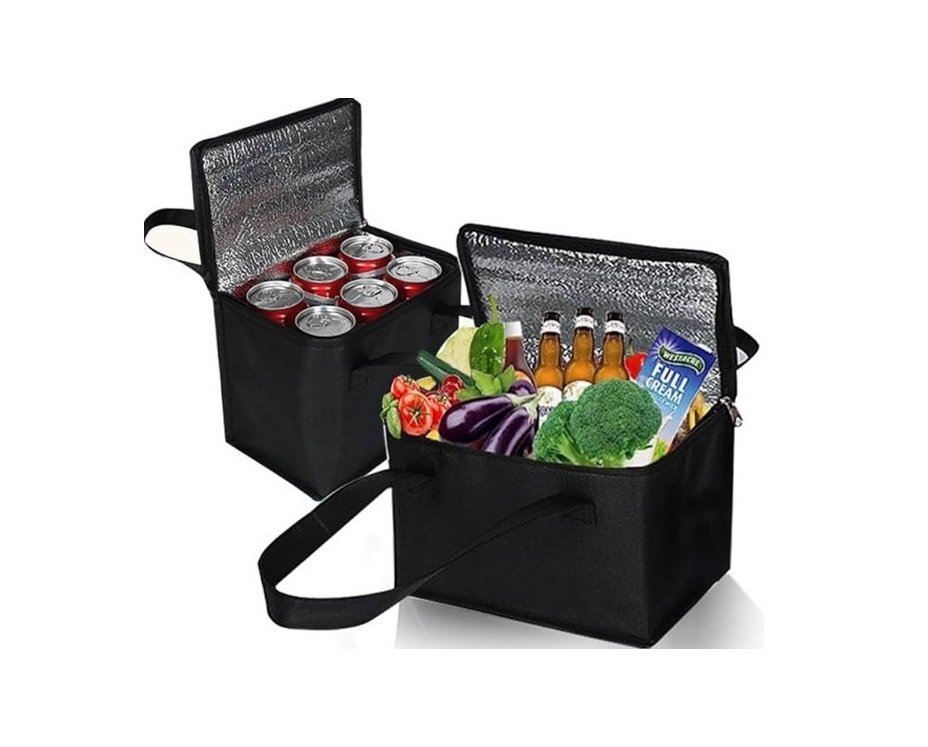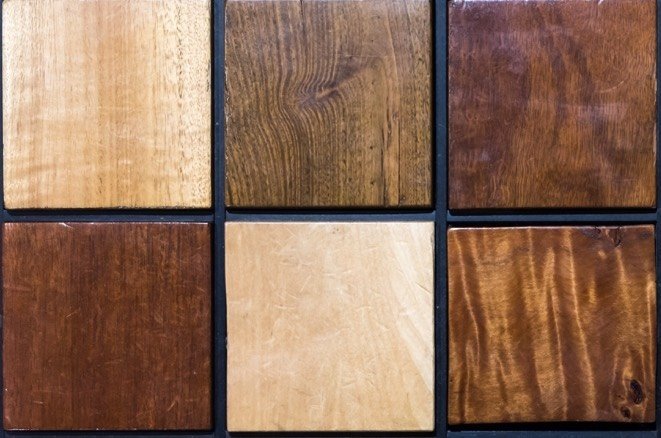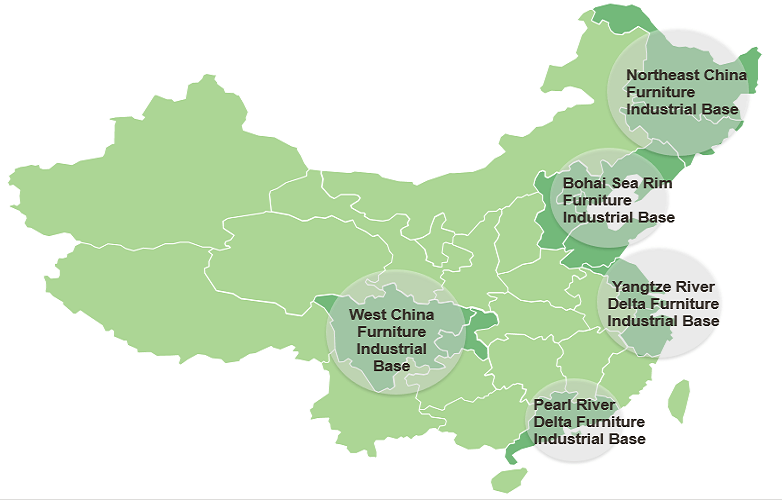Top Tips for Choosing a Chinese Cooler Bag Manufacturer
1. Introduction
2. Benefits of Importing Cooler Bags from Chinese Manufacturers
3. Finding the Right Chinese Manufacturer
4. Product Specification
5. How to Find the Right Manufacturer?
6. Negotiating with Chinese Manufacturers
7. Quality Control
8. Shipping and Logistics
9. Managing Import Costs and Risks
10. Challenges and Risks of Importing Cooler Bags from Chinese Manufacturers and How to Overcome Them
11. Conclusion
Here is a complete guide for importing from cooler bag manufacturers. The information on sourcing, selecting quality, and finding out how to deal with logistics to make import successful
1. Introduction
The globalization of the marketplace has meant that acquiring quality goods from overseas manufacturers can be a powerful competitive weapon for firms desirous of improving their product lines and generating greater revenue. Cooler bags are among the products which can be imported from China.
1. 1 What Cooler bags are
Cooler bags are portable containers designed to maintain food and beverages at low temperatures for quite a long time.
They are usually endowed with insulated walls to help in the regulation of the temperature of the contents and may have additional compartments, layers, and handles to facilitate handling.
These bags can be used for any occasion, such as going to the beach, having a picnic, or traveling.
1.2 Types of Cooler Bags
• Insulated cooler bag
They are the most popular types, and they come with insulations that are capable of keeping contents cold for several hours. It is made in diverse sizes and shapes.
• Lunch cooler bag
A type of bag specially made for taking lunch, mostly smaller than the typical bags.
• Backpack cooler bag
This type has features that combine the cooler and the backpack perfect for hiking or any Nature trip with long walking.
• Beach cooler bag
Usually, they are bigger and tougher as they are intended to be used on sandy or near the sea and simultaneously preserve a deter temp for the beach belongings.
• Fish cooler bag
These cooler bags are used for fish storage and transportation, particularly with additional insulation and water resistance features.
• Wine cooler bag
Used for maintaining temperature because wine should be stored at a certain temperature. These bags may have some add-on facilities, such as a shelf to hold wine bottles.
• Milk cooler bag
Designed for carrying and storing milk. It has a specific temperature to maintain the milk with the help of some special compartments.
• Golf cooler bag
These are normally small and can fit into the golf cart, and keep the beverages cold on the golf course for the golfers.
• Travel cooler bag
Bigger, mostly made to endure long travel, and capable of carrying different forms of foods and beverages.
• Cooler tote bag
A great choice for leisure rides. The cooler tote bag is perfect for daily use and shopping.
1. 3 Uses of Cooler Bags
Cooler bags are versatile and can be used in a variety of settings, including:
• Picnics and outdoor activities
Cooler bags can act as refrigerators during barbeques, picnics, sports events, etc.
• Travel
They are used to preserve perishable goods during a trip.
• Work and school
People use them to take food, especially lunches and drinks.
• Sports events
Providing cold beverages to athletes and spectators.
• Fishing and hunting
They are used to plan and estimate the amount of fish to be caught and the available stock.
1. 4 Market Demands
The demand for cooler bags is influenced by several factors, including:
• Lifestyle changes
Hiking and traveling require foods to be kept cool and fresh and this is facilitated by cooler bags.
• Health trends
These include increasing incidences of food-borne diseases and rising concern over the handling and storage of perishable foods at the right temperature.
• Product innovation
Several designs and features help to influence consumer’s purchasing decisions. These include materials such as eco-friendly ones, and improved insulation that slow down energy usage.
• Seasonal trends
The demand for these bags often increases during spring and summer when the weather is ideal for holidays and spending time outdoors.
2. Benefits of Importing Cooler Bags from Chinese Manufacturers
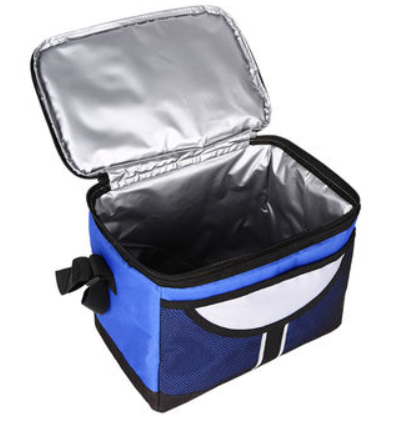
There are several advantages that cool bags imported from Chinese manufacturers have over other cooler bags that will be of immense benefit to businesses. Here are some key benefits:
• Cost-effectiveness
The cost reduction is one of the main factors that make entrepreneurs seek the help of Chinese manufacturers.
The manufacturing capacity of China makes it possible for them to manufacture cooler bags in large quantities, making them cheaper.
Importing products directly from China has been beneficial to companies since it has helped to cut various costs and increase profit margins.
• Wide range of product options
Chinese manufacturers provide a wide choice of cooler bags with major differences in their functional characteristics, designs, and materials.
Depending on the desired type of functionality, insulation, portability, or design suitable for a particular outdoor activity, the buyers can enjoy quite a list of options.
Manufacturers can develop various products and services to meet different market segments’ needs and wants.
• High-quality production
Most Chinese companies have acquired high technology and strict quality assurance methods to ensure they come up with quality goods.
Destined towards innovations and compliance with international standards, Chinese cooler bag manufacturers are capable of achieving high-quality products.
• Customization opportunities
Chinese manufacturers are flexible when it comes to the customization of cooler bags. Business people can ask for cooler bags designed for their unique needs.
This can be color customization, logo, size, and additional features, making it possible for the business to develop a product that can easily find its way in the market and be different from the rest to create that brand image.
• Efficient production and delivery
China has a strong background in supply chain management; hence, the smooth production and delivery process is guaranteed.
The efficiency derived from direct access to supply chain players leads to an improved supply chain management architecture that enables quick turnaround.
• Scalability
As for those companies who aim at expanding, Chinese manufacturers are ready to provide opportunities to augment such production rates.
In regards to initial orders, or for those placed at some point down the line, manufacturers can handle small orders just as easily as large orders.
• Access to emerging trends
China is mainly characterized by its dynamic manufacturing industry and it is usually associated with innovative trends and technologies.
Thus, by entering into cooperation with Chinese manufacturers, business gets an opportunity to acquire advanced cooler bag designs and options that correspond to modern tendencies and demands.
3. Finding the Right Chinese Manufacturer
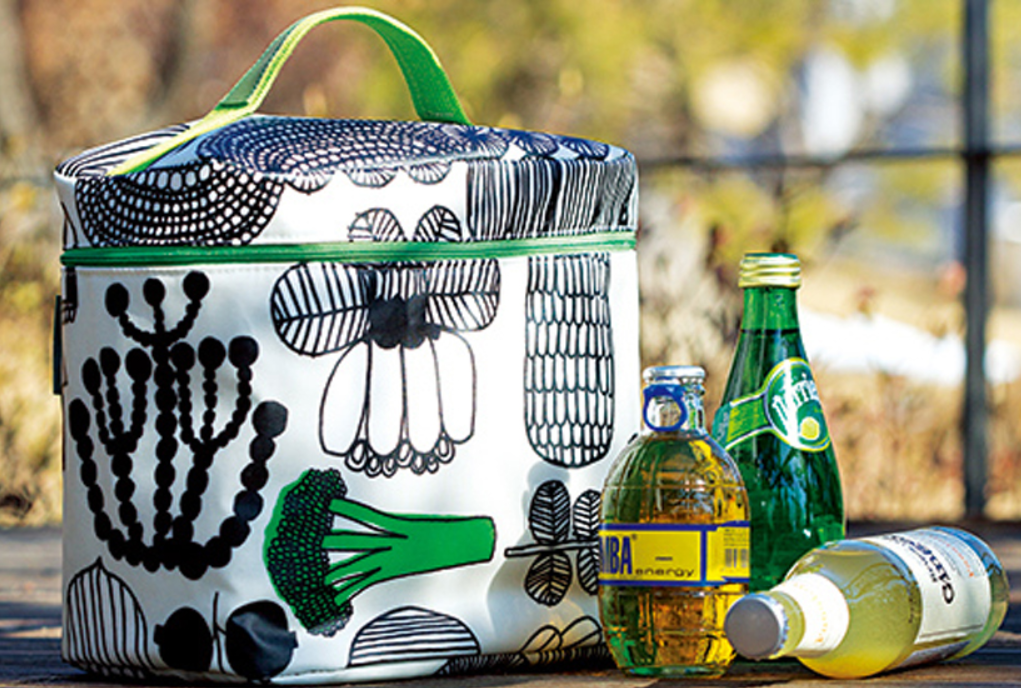
Selecting the right manufacturer is vital as it gives the importing business a solid start. This section will help you to understand how to choose a cooler bag manufacturer.
3.1 Where to find Chinese manufacturers
Finding reputable Chinese manufacturers can be achieved through various channels:
Platforms like Alibaba, Made-in-China, and Global Sources are popular for connecting buyers with manufacturers. These platforms provide features such as company information, product notes, and product descriptions.
• Trade shows and exhibitions
Trade fairs like the Canton Fair and China Import and Export Fair give one a chance to physically meet most of these manufacturers and producers and engage them directly in business.
• Industry directories
Manufacturers can be located through online industry directories and business listings. Other directories accessible online include those that can be found on HKTDC and ThomasNet, where the supplier directories are invariably numerous.
• Referrals and networking
Getting recommendations from other professionals in the same industry, or from other businesses that establish friendly-term relationships with the manufacturers can help to identify trustworthy suppliers with good references.
• Sourcing agents
One should engage the services of professional sourcing agents or companies since they can tell you where to source the specific manufacturers depending on your needs. They can negotiate on your behalf and also ensure quality is observed.
3.2 Criteria for selecting a manufacturer
When selecting a manufacturer, consider the following criteria:
• Experience and expertise
Ensure you have selected a manufacturer who has been in the production of cooler bags for some time. It is good if you have previous experience, especially if your business is in the internet marketing of a certain product line.
• Production capabilities
Understand the manufacturer’s production capabilities, level of technology, and equipment to see whether it is in a position to meet your production volume and quality.
• Quality standards
Ensure that the manufacturer complies with quality standards and accreditation like ISO to ensure the products produced meet the qualities of the international standards.
• Customization options
If you need some specific cooler bag, it is vital to revise the company’s repertoire for design and customization options.
• Communication and support
Partners should have good communication since it is the backbone of any partnership. Being able to talk to the manufacturer and have them be communicative and accommodating is ideal.
• Pricing and payment terms
Assess the affordability of the manufacturer about the prices and its payment terms.
3.3 How to verify the manufacturer’s legitimacy
To ensure you are dealing with a legitimate and trustworthy manufacturer:
• Conduct background research
Search the business name, legal status, and background information about the company. The essential pieces of information that you should check are their business permits and whether there are any undesirable issues associated with them.
• Request references and samples.
Ask for samples to determine the quality or the manufacturing ability of the company. This information should be indulged with the contacts of references to know their experiences with the manufacturer.
• Visit the factory
If possible, make a physical tour of the manufacturer’s premises to view their operations, flow of their production line, and quality assurance standards. This firsthand visit can be useful in the following ways.
• Use Third-party verification services.
Hire third-party inspection and verification service providers to do factory inspections to ascertain compliance with set quality and safety standards.
• Verify certifications
Verify for compliance with some standards like ISO 9001 which is an international standard on quality management.
4. Product Specification

When importing cooler bags, you must understand and define the product specifications to ensure you receive exactly what you need. This section outlines the key aspects of product specification to consider:
4.1 Sizes and Dimensions
Standard Sizes: Cooler bags are available in different standard sizes, including small, medium, and large. Small cooler bags can fit lunchboxes, and larger cooler bags are for family events.
• Custom sizes
Some manufacturers provide the convenience of making cooler bags according to the clients’ demands of size. Clearly define the dimensions that you require for your target market and usage conditions.
• Compartments and layout
One should also consider the internal design and the overall number of compartments required. These bags come with compartments, which may be two or more, but others have specialized sections where the types of items can fit.
4. 2 Materials Used
• Insulation materials
Foam, gel packs, and thermal liners are among the most popular insulation materials. Different types of insulation materials available determine the effectiveness of the cooler bag as far as temperature retention or cooling is concerned.
• Outer fabric
Cooler bags are normally made from different fabrics which include polyester, nylon, or canvas. Some bags have water-resistant or even waterproof capabilities to avoid any spillage affecting the content.
• Lining materials
Interior lining is very critical, especially when it comes to washing, to enhance its cleanness. Some of the most often used fabrics are PEVA – polyethylene vinyl acetate or PVC–polyvinyl chloride due to their ability to be wiped clean and their capability to insulate.
• Handles and straps
Handles and straps should be produced from resistant materials. These include using pads on the shoulder straps, use of more robust handles, and the use of adjustable straps for conveying convenience.
4.3 Customization Options
• Branding and logos
Some of the manufacturing firms provide an option of imprinting logos and company names on the cooler bags for branding.
• Colors and patterns
Choose manufacturers that offer customized colors and designs. A good manufacturer has bags available in multiple styles and colors, making it easier to match your brand’s image or your client’s preferences.
• Features and add-ons
Features and add-ons like additional pockets and bottle holders for bottles can be integrated into the design.
• Packaging
Pricing for buttons is also efficient and affordable. If you want to go a notch higher, you should work with a manufacturer that offers customized packaging.
4. 4 Minimum Order Quantities
Manufacturers typically have a minimum order quantity (MOQ) that varies based on factors like product type, customization level, and production capacity. They vary from hundreds or even tens of a few hundred to thousands or tens of thousands of units.
For custom designs or features, the MOQ may be higher due to the added complexity and production requirements. Negotiate the MOQ based on your needs and budget.
There is always the tendency to bargain with some manufacturers over the MOQs, most especially for brand-second consumptions or bulk orders. Talk with the manufacturer about the opportunity to make changes if your first order quantity is not high enough to meet the manufacturer’s MOQ.
MOQs do come along with a specific price. Extra-large portions allow for lowering the cost per portion, making it possible to bring quantity and quality in line with customer demand level and your budget.
5. How to Find the Right Manufacturer?
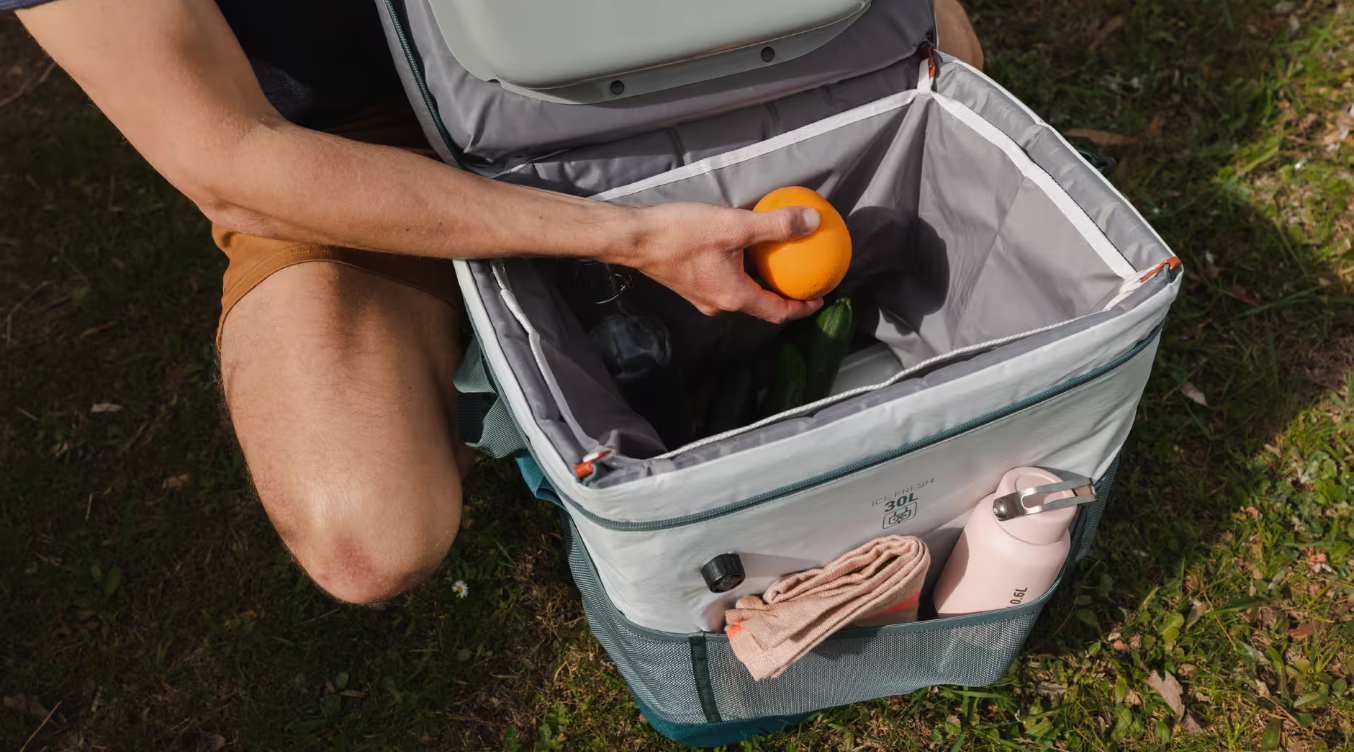
Finding a reliable and suitable manufacturer is a critical step in importing cooler bags. Here are tips to use to locate and evaluate potential manufacturers:
5. 1 Researching Online
• Online marketplaces
Alibaba, Made-in-China, and Global Sources, among others, are among the online marketplaces to find manufacturers. Such portals enable you to look for specific manufacturers, analyze offers that they have on their websites, and read more about their previous clients’ experiences.
• Industry websites and directories
Search for some field-related websites and directories where manufacturers and suppliers can be found. Such resources provide general company background and specific product information.
• Company websites
Check the websites of potential manufacturers to get more information concerning the products they offer, their ability to manufacture, and background information. Also, focus on clients’ experiences, case studies, and comprehensive descriptions of a product.
5. 2 Using B2B Platforms
• Search Filters
You can refine your search on B2B platforms according to the requirements of the type of product you need and the size and area of the company you are interested in.
• Supplier verification
Most B2B platforms provide their clients with supplier verification services such as factory inspection and certification validation. Use such information to gauge the legitimacy and reliability of the manufacturers.
• Request for quotes (RFQs)
Send out the RFQs to several manufacturers using the B2B marketplaces to receive data on the prices, conditions, and products offered. This assists you in assessing the price levels and the kind of service to offer to the customers.
• Product samples
Carry out a sampling exercise to the selected manufacturers to help in determining the quality of the final products before placing an order for large quantities.
5.3 Checking manufacturer’s background
• Business registration
Check the manufacturer’s business license or registration and other legal documents. Check whether they have permits, licenses, and accreditation to allow them to carry out business legally.
• Reviews and references
It is also essential to remind a buyer to check the reviews and the testimonials of other buyers. Ask the manufacturer for the contacts of its past customers. Contact those customers and ask them about their experiences.
• Industry associations
The experience of the manufacturer with membership in certain industry associations or organizations may also let us know more about their reliability and adherence to the industry trends.
• Financial stability
If at all possible, evaluate the financial status of the manufacturer to determine whether or not he has sufficient capital to offer you the desired opportunity. A clean financial record can be an asset to determine their credibility and capacity to complete the orders.
5. 4 Communication with Manufacturer
• Initial contact
Call your potential manufacturer to state your needs and ask questions that can help you evaluate the supplier’s courtesy and professionalism.
• Clear specifications
Inform your supplier of the size, material used, and any form of customization required on the product. Clear communication prevents misinterpretation of your needs to the manufacturer.
• Negotiate terms
Explain and agree on the contractual conditions of the partnership, such as the pricing structure and terms of payment, lead time, and delivery. All your agreements should be in written form.
• Ongoing communication
To make it easier to control the production process, it is vital to continuously communicate with your manufacturer about the progress and successes. It is also vital to address any concern or problem that may arise. That ensures seamless work execution and optimal time management is achieved.
6. Negotiating with Chinese Manufacturers
One of the major factors that determine the ability to form a viable partnership with Chinese manufacturers is negotiation. Here is how to approach negotiations on key aspects:
Price
• Research market rates
To begin with, the feasibility of the price to be negotiated has to be done by conducting market research that aims at determining an average price for cooler bags in the market. That helps gain an understanding of whether or not the manufacturer’s quote is reasonable.
• Request detailed quotes
Obtain a detailed quote from the manufacturer, breaking down costs for production, materials, and any additional services. They help to negotiate more confidently and with no hidden information.
• Negotiate bulk discounts
It is easy to negotiate the price if you want to place bulk orders. Vendors usually offer a lower price per item in voluminous purchases.
• Discuss long-term partnership
These may include showing interest in doing business in the future. Manufacturers may quote better prices or more preferable terms of payment if they are sure that they will always have business with the buyer.
• Consider total cost
Standardize all conceivable expenses, such as transportation costs, customs charges, and possible quality assurance costs, to establish total importation costs.
Quality Standards
• Define quality requirements
It must be prescribed what quality is expected from you and what quality you have to deliver. Ensure you be as descriptive as possible when defining the quality and where possible, should include samples of the quality.
• Request certifications and test reports
Request and scrutinize quality certifications like ISO or other quality standards to see if the manufacturer meets quality standards.
• Negotiate quality control measures.
Coordinate the quality assurance procedures such as inspection and testing to ensure the products you make undergo your quality check before they are shipped out.
• Quality assurance agreements
You should take time and ensure that you take care of your interests by putting quality assurance clauses to protect your interest in your contracts. Explain how organizations should deal with products that do not meet the required quality standards.
Delivery Time
• Specify delivery requirements
Manufacturers to import from should provide delivery dates. They should specify when they can deliver your finished products.
• Discuss production capacity
You should know the manufacturer’s capabilities the general productivity and question them on their readiness to meet your delivery dates. Ensure they can cope with your order load within the given time.
• Negotiate for faster turnarounds.
In case of rush orders or when you require your cooler bags on short notice, discuss the conditions for a shorter time frame and price.
• Agree on penalties for delays.
Include clauses in the contract addressing penalties or compensation for delivery delays. That makes it easier to hold them accountable for their promises.
Payment Terms
• Standard payment terms
Agree with your supplier on the amount of money to be paid before the service is provided and another amount, if any, to be paid for after the service has been delivered. Some of the practices include 30/70, where 30% is paid in advance while 70% is paid upon delivery of the goods.
• Negotiate payment options
Trade credit must also be considered a flexible payment method to control cash inflow and risks associated with financial payment.
• Payment Security
It is necessary to ensure that payment methods your manufacturer uses have provisions against fraud or non-performance of the buyer. Be particular with the payment options you accept and only agree to the terms of payment that reduce risks.
• Document agreements
Ensure the payment terms, as agreed between you and the manufacturer, are spelled out in the contract. These include the amount and payment methods.
7. Quality Control
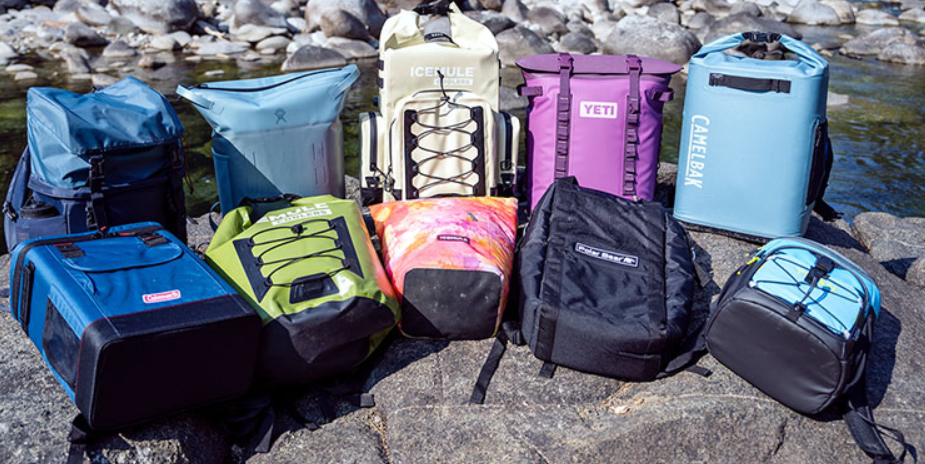
Ensuring high-quality products is crucial for maintaining customer satisfaction and protecting your brand reputation. Below are the major factors of quality control when importing cooler bags from Chinese suppliers.
7.1 Importance of quality control
• Customer satisfaction
Importing high-quality goods ensures that the customer needs are met, eliminating cases of returns or complaints. Therefore, customers will be more loyal to the business.
• Brand reputation
Offering quality products consistently creates and maintains a good brand image in the marketplace.
• Compliance and Safety
Quality control helps to maintain safety standards and regulatory compliance, minimizing the prospect of legal action by organizations such as the Food and Drug Administration that protect consumers.
• Cost efficiency
Most of the quality problems are costly as they result in rework, returns, or refunds that can be avoided to improve the company’s profitability.
7.2 Pre-production inspection
• Supplier evaluation
During pre-production assessment of the manufacturer, try to assess the quality control processes and capacities of the manufacturer. That entails rating the quality management system, certifications, and previous performances.
• Material inspection
Review and evaluate the raw materials and all the components to be used in production. Ensure those materials meet your desired quality and characteristics.
• Prototype review
If possible, approve samples or prototypes before giving the manufacturer the green light for mass production of your product. That assists in verifying that design and quality are to the extent that you desire or anticipate.
• Production plan
When building a production plan, it is advisable to involve the manufacturer to provide insights on how the production will be carried out, including quality assurance measures and time frame, among other conditions.
7.3 During production inspection
• In-process quality checks
Implement in-process inspections to monitor production quality at various stages. These should involve examining the castings for such properties as consistency, workmanship, and conformity to specifications.
• Quality control personnel
Also, ensure that the manufacturer has employed quality control personnel or quality control teams whereby they are charged with the responsibility of conducting inspections occasionally or as a result of complaints received in between periods of regular check-ups.
• Inspection reports
Ask for examination reports more frequently and learn about the production condition. That enables you to know the quality of your order and the progress being made.
• Corrective actions
It can also be essential to establish a close relationship with the manufacturer. It helps solve problems when there are damages or deviations from the specs. Take proper corrective measures to avoid such issues to reoccur in the future.
7.4 Final inspection and testing
• Pre-shipment inspection
Organize a final inspection of the final productions before dispatching them to the market. That entails a close inspection for defects, variations, and general quality of the manufactured item.
• Testing
Conduct tests for the functionality of the cooler bags as per the laid down performance criteria like insulation properties, durability, and safety. That may involve normal lab tests or actual use tests.
• Inspection certification
Get the inspection certificate or the inspection reports from the manufacturer or a third-party inspection agency.
• Approval and release
Check the outcome of the final inspection and release the shipment when the products are of acceptable quality. Ensure that any problems are solved before having the shipment out.
8. Shipping and Logistics
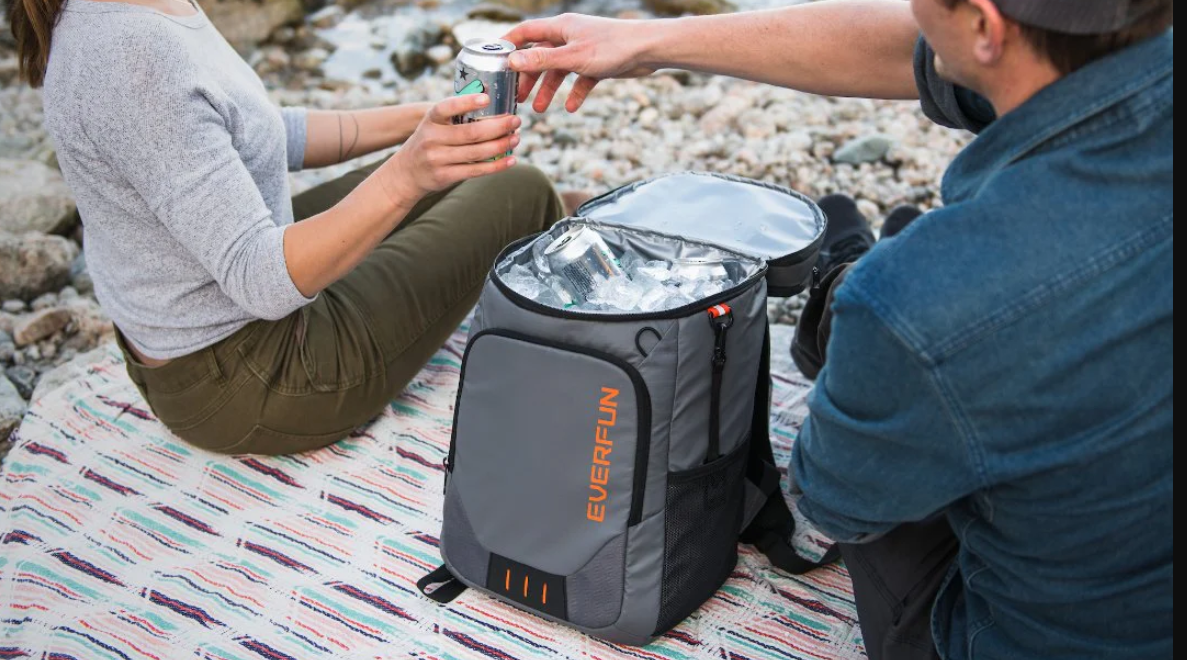
Navigating shipping and logistics is essential for ensuring that your cooler bags are delivered on time and in good condition. This section discusses factors that relate to shipping and logistics that are of the essence when sourcing from China manufacturers.
8.1 Understanding Shipping and Logistics
• Shipping and logistics overview
Shipping and logistics refer to the act of arranging, implementing, and overseeing the transportation process of products from the producer to the user. For example, it comprises the choice of transportation, in addition to the processing and control of paperwork and customs formalities.
• Roles and responsibilities
Be aware of the different types of actors involved in this process, i.e., manufacturers, foreign forwarders, customs brokers, and carriers. Ensure there is effective communication and coordination between you and the shipping firm.
8. 2 Shipping Options
• Sea Freight
Sea freight is also cheaper, especially for big consignments and for large orders. It usually takes a longer time to transport goods from one point to another.
However, its charges are comparatively lower than that of air freight.
• Air freight
Air freight is faster, and in some circumstances, it can be more appropriate depending on the size of the shipment. While it is more costly than sea shipping, it offers a shorter time of transport than sea shipping.
• Express services
Express mail companies such as DHL, FedEx, or UPS are ideal for timely consignments that need to be used.
That option is suitable for small orders regarding the amount of parts or for parts that are in higher demand by the customers.
• Land Freight
Whenever the delivery is to be made to a neighboring country or within a particular geographic area, then land transportation may be feasible. Intermodal transport can be relatedly used along with sea or air transport modes of transport.
• Freight forwarders
Hire a freight forwarder for organizing shipping and transportation, for instance, booking of transport, consolidation of cargoes, and much more.
8.3 Customs clearance procedures
• Customs documentation
Always identify all possible documents required in the customs clearance process. These include commercial invoices, packing lists and bills of lading, and any certificates of origin or compliance licenses.
• Duties and taxes
It is also very vital to have insight into the import duties, taxes, and tariffs that may be within your cooler bags. Taxes imposed for imported products depend on the kind of goods, ad valorem, or the amount of the cost and the country of importation.
• Customs broker
It is advisable to engage the service of a customs broker when it comes to clearance of customs. A broker is useful when dealing with issues such as regulation, documentation, and import compliance.
8.4 Transporting and delivering the goods
• Packaging and labeling
Ensure that cooler bags are well packed in ways that they will not be damaged during the transportation process.
Another important requirement is the proper labeling of the product and its handling instructions together with shipping information.
• Tracking and monitoring
One can track using the services offered by shipping carriers or freight forwarders to determine the status of their shipment.
That way, you know when the estimated delivery times are and if there have been any changes or delays.
• Handling issues
It is the responsibility of the transporter to ensure that they deal with any problems likely to occur, for instance, delay, damage or there were discrepancies while transporting the products.
Cooperate with those shipping carriers or freight forwarding companies and avoid all the issues that would make the delivery unsuccessful.
9. Managing Import Costs and Risks
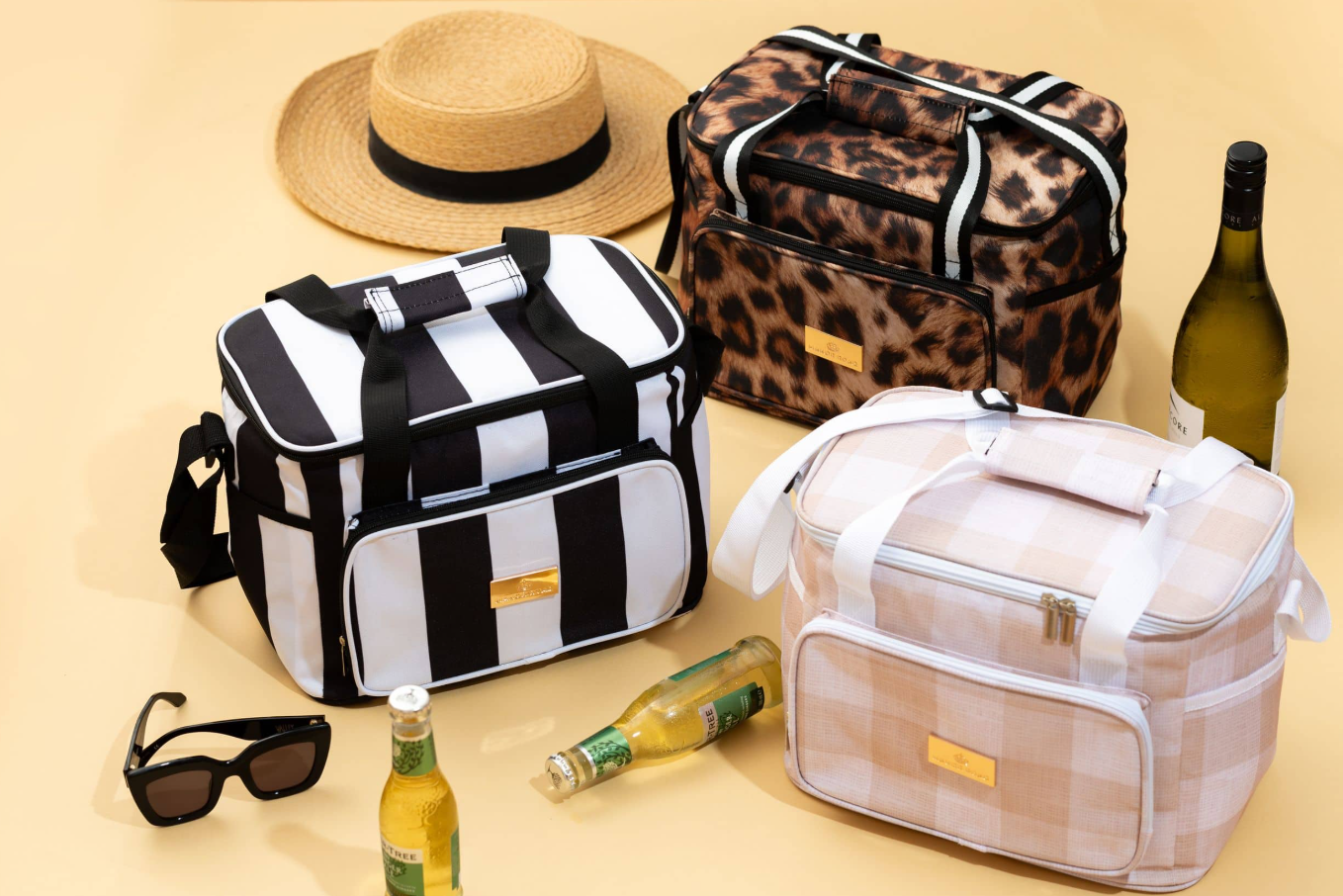
The following are ways through which it is possible to manage import costs and minimize risks as a way of improving the profitability and enhancing the importing process.
This section gives recommendations on import duties and tax administration, exchange rates to adopt, and how to guard against fraud and scams.
9.1 Import duties and taxes
• Understanding duties and taxes
Import duties and taxes are charges the government places on imported products. Such aspects can be customs duties, value-added tax, local sales tax, and other taxes or fees that may be in force. Check from the customs of your country the general duties and taxes that relate to cooler bags.
• Classifying goods
Ensure that you assign the right HS codes to the right product. This impacts on the duty rates and the tax. Consult a customs broker, or research on the correct classification and compliance to the customs regulations.
• Calculating costs
It is always required to determine the overall amount that is to be paid as import duties and taxes. That amount stems from the value of the goods, their shipping cost, and tariffs charged for importation. Better yet, incorporate these costs in your financial formulation and avoid exploitation by the service providers.
9.2 Managing currency exchange rates
• Exchange rate fluctuations
Fluctuation of currency exchange also puts a toll on your imports because the exchange rates differ from time to time. Stay updated with the fluctuations in the exchange rates and do research about what financial instruments or services prevent the rates’ shifts.
• Forward contracts
To minimize the impact of exchange rates on the company’s future operations, employ forward contracts or hedging mechanisms to agree on the exchange rates at which the transactions will be done. It also means that you can minimize the risks associated with the rate changes turning unfavorable for your financial capabilities.
• Multi-currency accounts
Keep multiple currency accounts for paying the suppliers in that particular currency. That can make transactions more convenient.
9.3 Protecting against fraud and scams
• Verify supplier credentials
Vigorously investigate possible manufacturers and suppliers before doing business with them. Check if they are registered and recognized businesses and whether they have a good record or not.
• Use secure payment methods.
Choose a manufacturer that uses efficient and secure payment methods to minimize fraud. Among the secure payment methods are Letters of Credit and Bank Transfers. Do not pay on unknown sites and applications that are not secure enough.
• Beware of red flags
There are some signs that one should be wary of. Suspicious signs include prices that appear too good to be true, being asked to pay through other methods than usual, and being given little or no information. Such techniques are usually employed by scammers.
• Document transactions
Record all transactions, communications, and agreements in full and with a high level of detail. Documentation is beneficial as it enables a firm to handle some of the disagreements and also have proofs in the cases of fraud or some problems.
10. Challenges and Risks of Importing Cooler Bags from Chinese Manufacturers and How to Overcome Them
The following are some of the advantages that accrue from importing cooler bags from China respectively. Awareness of these potential problems and the ways of avoiding them is necessary for a successful import experience.
Quality Control Issues
• Inconsistent quality
There is always a risk associated with quality variations in the products that are manufactured. To overcome this, ensure that proper quality standards are set and followed, to ensure that quality check is conducted before the actual production.
• Inspection protocols
Engage third-party inspectors for physical checks at some point to ensure compliance with set standards. Establish a quality assurance agreement with the manufacturer concerning failure or differences.
• Supplier audits
Visit the supplier’s premises and take time to assess their facilities. Assess the quality of its products to confirm if they meet the standards of your organizational standards.
Communication Barriers
• Language and cultural differences
There is also the problem of language and cultural differences which in a way affects communication. Ensure that there is effective communication by stressing the use of simple language and checking on the understanding in writing.
• Time zone challenges
Distances can cause time differences. Thus, the communications are slowed. Include the frequency of updates you want and the approximate time that can be expected for the response.
• Professional intermediaries
If there is a major difference in language and cultural background, one might employ industry-specific go-betweens like sourcing agents or consultants.
Regulatory and Compliance Issues
• Import regulations
Export and import laws and policies, to some extent, may present a challenge when it comes to compliance. Check the laws of your country and ensure that your products conform to the standards and accreditation required.
• Customs procedures
Ensure that the manufacturer has adequate knowledge regarding the customs formalities. Consult with a customs broker to avoid experiencing problems when clearing goods.
• Product standards
Make certain that your cooler bags meet safety standards. They should also be environmentally friendly according to the regulations of the country. Check certifications and also conduct tests to confirm the products conform to the regulations.
Major Issues In Shipping and Logistics
• Delayed shipments
You must be prepared to deal with the potential issues that shipping can have on your supply chain. Use trustworthy freight forwarders to minimize delays.
• Damage and loss
Products can be damaged, lost, or even stolen when in transit. Ensure that the shipment is properly packaged and insured. Track the shipment so that any complications can be resolved in good time.
• Logistics coordination
Maintain regular communication with the manufacturing companies, freight companies, and carriers to ensure the flow of products and their delivery is seamless.
Financial Risks
• Currency fluctuations
Changes in the exchange rates impact the cost of imported goods of an organization or country. Forward contracts are the best to overcome currency risk and hedging to overcome fluctuating prices.
• Fraud and scams
Minimize fraud risk by using secure payment options. Also, look out for warning signs of fraud when transacting.
• Cost overruns
Unexpected costs can always appear on the horizon. Adjust for inflation and ensure that there is always some allocation for contingencies.
11. Conclusion
Choosing to import cooler bags from China is a good business decision. Cooler bags from Chinese manufacturers are cheap and of high quality. For the process to be smooth, maintain good communications and good relationships with manufacturers and suppliers of automobile spare parts. Credible information exchange, improved trust, and effective communication will yield improved and favorable contractual terms and stable performance and operations.
Introduce electronics as a way to control the Supply Chain. Adopt inventory control mechanisms, monitor shipment so that the needs are tracked in real-time, and utilize data to predict the demand and availability of stocks.
Set better terms of how and when to price the products and set the quality of the products to be delivered. Always negotiate on issues such as purchasing large quantities of materials, having long-term contracts, and ways of paying for the materials. Draw up contingency plans in case of another occurrence of problems that include supply shocks, quality shocks, or shocks resulting from regulatory changes. This is possible in the sense that organizing for contingencies minimizes the effects of volatile situations.
Select the cheap and fast means of transport depending on your needs. Integrate shipments, bargain with the contractors involved in shipping to be able to slash the prices, and ensure they properly and safely package the products to avoid wastage.
The following guidelines should be followed when evaluating your supply chain performance: Have major performance indicators, evaluate suppliers’ performance, and modify strategies in terms of performance data and market conditions.
In many cases, the Chinese manufacturers use low-cost inputs to their products hence giving them a cheaper price tag compared to their competition. This also enables the business to purchase quality cooler bags at a cheaper price, hence making a difference in profitability.
The cooler bag manufacturing industries in China are also diversified in nature, and there is a variety of designs and materials for the cooler bags that are available that allow the companies to select the desired cooler bag that is suitable for the prevailing market conditions. Some of the manufacturing companies from China have adopted sophisticated technology and techniques in their production, hence producing quality products that meet the current standards and requirements.
One has to conduct vigorous research on the manufacturers and take his/her time to do so. Confirm vocational qualifications and calibrate them to a particular skill set and also check on the portfolio to make sure quality and production meet the tolerances required. Keep good lines of communication with manufacturers during the full cycle of importing. Develop measures to define requirements, requirements descriptions, and commitments that will reduce confusion during the project delivery.
Related Post
Furniture is a must for an office or a home. It is available at varying price points as Read more
Wood is extensively used in making furniture around the world. Wood can be molded in any shape or Read more
In the current market condition, a major portion of the world's consumption depends on China. The product range Read more
Contact Us Get Free Quote!
* Please kindly fill out the form for inquiry
* we will reply to your inquiry within 24hours
